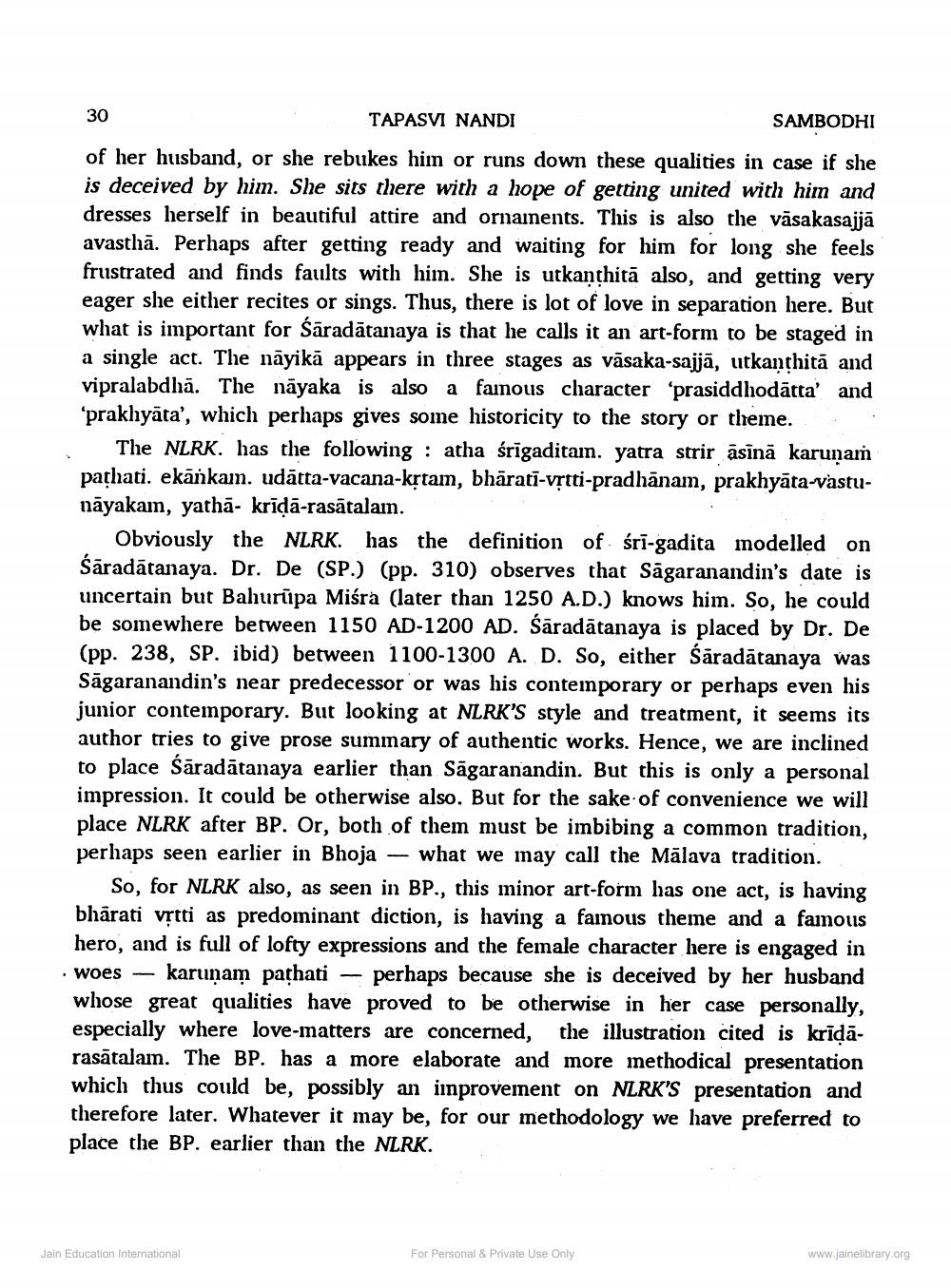________________
30
TAPASVI NANDI
SAMBODHI of her husband, or she rebukes him or runs down these qualities in case if she is deceived by him. She sits there with a hope of getting united with him and dresses herself in beautiful attire and ornaments. This is also the vāsakasajjā avasthā. Perhaps after getting ready and waiting for him for long she feels frustrated and finds faults with him. She is utkanthitā also, and getting very eager she either recites or sings. Thus, there is lot of love in separation here. But what is important for Śāradātanaya is that he calls it an art-form to be staged in a single act. The nāyikā appears in three stages as vāsaka-sajjā, utkanthitā and vipralabdhā. The nāyaka is also a famous character 'prasiddhodātta' and 'prakhyāta', which perhaps gives some historicity to the story or theme.
The NLRK. has the following : atha śrigaditam. yatra strir asinā karunam pathati. ekankam. udātta-vacana-kstam, bhārati-vȚtti-pradhānam, prakhyāta-vastunāyakam, yathā- krīdā-rasātalam.
Obviously the NLRK. has the definition of sri-gadita modelled on Śāradātanaya. Dr. De (SP.) (pp. 310) observes that Sagaranandin's date is uncertain but Bahurūpa Miśra (later than 1250 A.D.) knows him. So, he could be somewhere between 1150 AD-1200 AD. Śaradātanaya is placed by Dr. De (pp. 238, SP. ibid) between 1100-1300 A. D. So, either Śāradātanaya was Sāgaranandin's near predecessor or was his contemporary or perhaps even his junior contemporary. But looking at NLRK'S style and treatment, it seems its author tries to give prose summary of authentic works. Hence, we are inclined to place Sāradātanaya earlier than Sāgaranandin. But this is only a personal impression. It could be otherwise also. But for the sake of convenience we will place NLRK after BP. Or, both of them must be imbibing a common tradition, perhaps seen earlier in Bhoja – what we may call the Mālava tradition.
So, for NLRK also, as seen in BP., this minor art-form has one act, is having bhārati vịtti as predominant diction, is having a famous theme and a famous hero, and is full of lofty expressions and the female character here is engaged in · woes - karunam pathati - perhaps because she is deceived by her husband whose great qualities have proved to be otherwise in her case personally, especially where love-matters are concerned, the illustration cited is krīdārasātalam. The BP. has a more elaborate and more methodical presentation which thus could be, possibly an iinprovement on NLRK'S presentation and therefore later. Whatever it may be, for our methodology we have preferred to place the BP. earlier than the NLRK.
Jain Education International
For Personal & Private Use Only
www.jainelibrary.org




